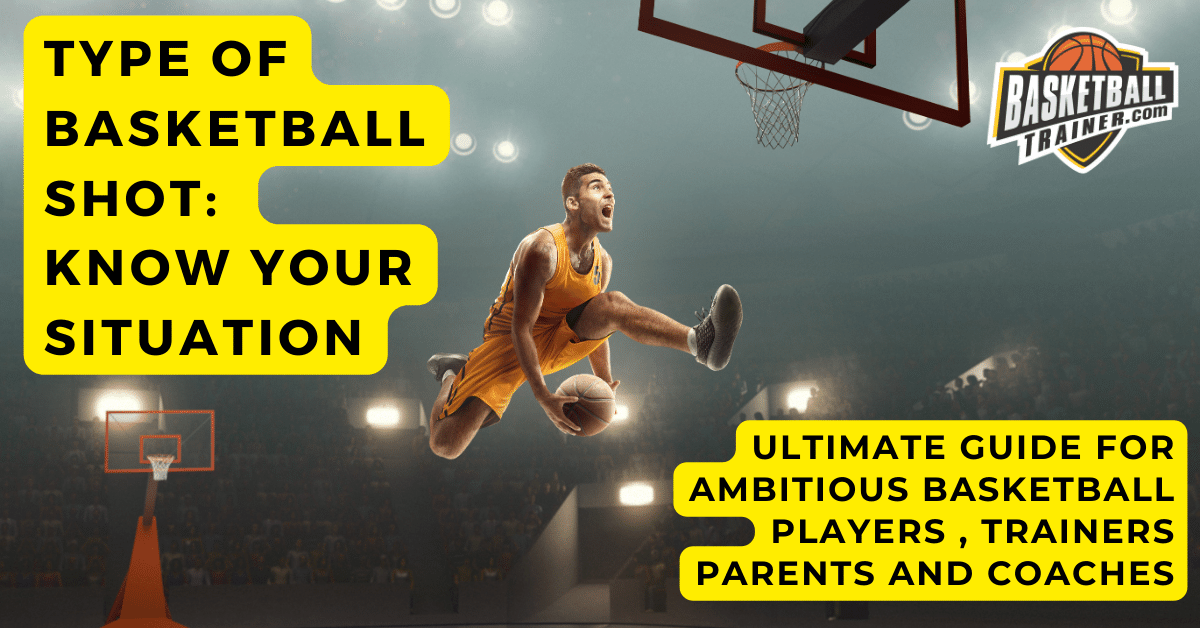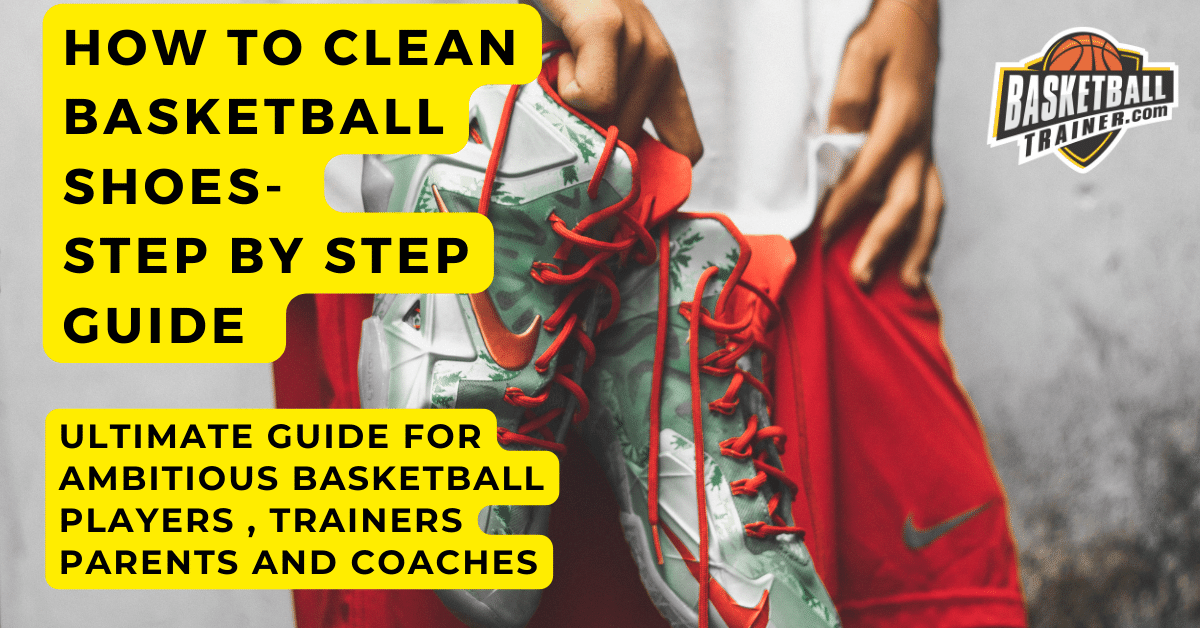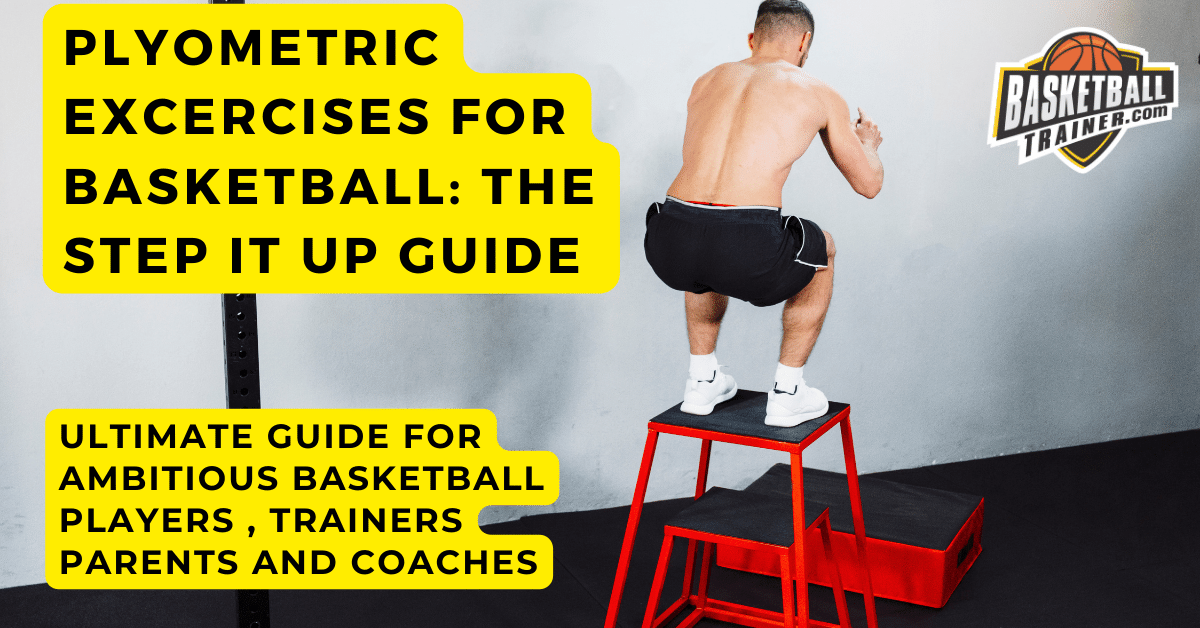
Mastering the Type of Basketball Shots is no easy feat.
In fact, when it’s time to level up your game, their #1 challenge is…
Type of Basketball Shots.
Many players have NO clue how to perfect them. But this is what separates a casual player from an NBA star. If you don’t know how to execute these shots flawlessly, you’ll never reach this level.
Honing basketball shooting skills can be tough, folks.
Consider for instance one aspiring baller who told me that as soon as he tried mastering the jump shot… he ended up spraining his ankle!
Now he’s hesitant to try again and scared that he’ll never improve his basketball career.
No wonder!
But truth time…
Without mastering different types of shots in basketball, he won’t.
Table of Contents:
- Mastering the Art of Shooting in Basketball
- The Power and Precision of the Jump Shot
- Unleashing the Hook Shot
- Banking on Angles with Bank Shots
- Free Throws – Turning Fouls into Points
- Driving Home Points with Layups
- Comprehensive Drills for Perfecting Your Shots
- FAQs in Relation to Type of Basketball Shots
- Conclusion
Mastering the Art of Shooting in Basketball
The importance of shooting accuracy for basketball players cannot be overstated. It’s a vital skill that can dictate the pace and outcome of any game.
A shining example is Phoenix Suns’ Devin Booker, who scored an impressive 47 points on 15-22 shooting during Game 6. His performance serves as proof that mastering different types of shots leads to a balanced offensive game.
Diversifying Your Shot Techniques
To become a complete scorer, one must diversify their shot techniques. How do you make sure your opponents are always guessing what shot you’ll take next?
Your first step should be diversifying your shot techniques. This means not only honing your physical skills but also understanding when and how to execute each type of shot effectively.
Take inspiration from greats like Devin Booker whose scoring spree against Los Angeles Lakers demonstrated his mastery over diverse shots such as jump shots, layups, mid-range jumpers, and three-pointers. Michael Jordan teaches a host of sporting legends serve not just as inspiration but provide practical examples showcasing how incorporating variety within one’s shooting arsenal can elevate any basketball player’s game manifold times over time leading them closer towards achieving greatness akin to their own illustrious careers thus far.
Inspiration From NBA Greats
- NBA stars offer invaluable insights into perfecting various shot techniques through their performances both on-court and off-court training routines alike.
- You needn’t look further than Michael Jordan or LeBron James for advanced shooting tips including footwork nuances involved in perfecting one’s jump-shot technique while LeBron demonstrates his unique approach towards driving home points via powerful layups or open pull-up jumpers when required.
- Sporting legends like these have set benchmarks with their good jump shots which aspiring big players must aim at emulating if they wish to develop similar prowess themselves. Remember: Practice makes permanent – so keep practicing until it becomes second nature.
Key Takeaway:
Master the art of shooting in basketball by diversifying your shot techniques, taking inspiration from NBA greats like Devin Booker and Michael Jordan. Hone not just physical skills but understand when to execute each type of shot for a balanced offensive game.
The Power and Precision of the Jump Shot
Jumping shots are a fundamental component of basketball scoring. They demand balance, stability, and precision from players.
In fact, if you’re looking for ways to elevate your game as a player or improve your team’s performance as a coach or trainer, refining this shot should be high on your list. The shooting hand plays an essential role here – directing the ball’s trajectory while ensuring accuracy throughout its flight path.
Your non-shooting arm is equally important; providing much-needed balance during jumps and acting as defense against potential interference by opponents. For those seeking advanced shooting tips that can help perfect their jump shots:
- Maintain alignment between elbow & knee when taking off – aids body control mid-air;
- Practice controlling force depending upon distance from basket – remember: precision over power.
- Familiarize yourself with court positions where you feel most comfortable executing these shots – practice makes permanent.
Emulating Greats: Michael Jordan and LeBron James
Basketball history has been shaped significantly by legends like Michael Jordan. His unique approach towards mastering good jump shots included exceptional vertical leaps which gave him additional time for aiming accurately even under pressure.
Jordan was not just another big player but one who revolutionized how we perceive successful execution of powerful yet precise jump shots.
Meanwhile, current Los Angeles Lakers’ star LeBron James offers his own take on achieving excellence in this field.
LeBron combines strength with excellent footwork & timing skills rather than relying solely on high leaps making each attempt look effortless while maintaining remarkable efficiency.
These two examples show us there isn’t merely one route towards becoming proficient at good jump shots but multiple paths leading towards success based upon individual strengths & preferences thus inspiring ambitious athletes worldwide continue pushing boundaries until they reach desired goals.
Key Takeaway:
Mastering the art of jump shots in basketball isn’t just about power, but also precision and balance. Emulating legends like Michael Jordan and LeBron James can help you find your own path to success. Remember, practice makes permanent.
Unleashing the Hook Shot
The hook shot is a potent scoring technique in basketball, particularly during close encounters or post plays. It’s an unorthodox yet effective weapon that can be used to outsmart and overcome defenders. The execution of this shot requires finesse, timing, and strength from players.
A shining example of successful utilization comes from DeAndre Ayton of the Phoenix Suns with his hook shots. These are a testament to his skill set as he regularly uses them efficiently.
Making Your Hook Shot Unstoppable
So how do you make your hook shots unstoppable like those delivered by big players such as DeAndre Ayton? Consistent practice coupled with proper form and footwork is key here. Begin practicing near the hoop where maintaining balance while performing this move becomes easier before gradually moving further away for added challenge.
Your aim should be accuracy first, then adding distance or speed into consideration. Learning this complex but rewarding technique will ensure mastery over all aspects without compromising on any crucial element involved in its execution.
Honing Your Footwork for Better Execution
- In addition to mastering shooting techniques, having impeccable footwork is critical too – just like how professionals execute it. Good footwork provides stability which helps create space between you and defending opponents, leading to better scoring opportunities.
Tips For Mastering The Hook Shot Technique
- Focusing on releasing high-arcing throws instead of flat ones since they’re harder for defenders to block due to their trajectory path going upwards rather than straight ahead. This increases the chances of landing points even under pressure situations.
While these tips may help improve individual performance significantly over time, always remember that each player is unique. Thus, it is essential to tailor practices according to one’s particular strengths and weaknesses for the most advantageous outcomes in the long run. Hence, tailoring workouts to suit individual abilities and deficits is essential for attaining the best outcomes in the future.
Key Takeaway:
To ace the hook shot in basketball, start with mastering your footwork and form near the hoop. As you get comfortable, add distance for a challenge. Remember to focus on high-arcing throws and tailor your training to fit your unique strengths and weaknesses.
Banking on Angles with Bank Shots
The bank shot is a classic basketball move that relies heavily on understanding and exploiting angles. This type of shot involves bouncing the ball off the backboard at an angle into the basket, making it one of those skills where geometry meets athleticism.
To achieve a successful bank shot, you must be mindful of your distance from the hoop and calculate the shooting angle relative to the backboard. It’s often said that if you’re positioned along or inside what we call ‘the bank zone’, then it might just be prime time for a well-placed bank shot.
You may wonder why bother with such complexity when there are seemingly simpler shots available? Well, here are some compelling reasons:
- Increased Success Rate: The larger surface area provided by using the backboard increases chances of successful attempts compared to direct shots – essentially giving more room for error.
- Variety in Play: Incorporating different types of shots like these makes players unpredictable and harder for defenders to guard against – keeping opponents guessing can give you quite an edge during games.
- Saving Energy: Unlike swishes which require brute strength, banking requires finesse over power as they rely more on precise angling than forceful throwing – thus conserving energy while still getting points up.
Man Game Activity Guide
In situations involving man-to-man defense scenarios (often referred to as “man games”), having diverse skill sets becomes crucially important. Here’s where mastering banking comes into play. Rather than trying to overpower your opponent through speed or sheer strength alone, sometimes all it takes is the smart application of simple geometric principles.
This isn’t mere theoretical talk either; many greats have effectively used bank shots under high-pressure conditions during critical moments in their careers. Tim Duncan aka ‘The Big Fundamental’ was famous for his deceptively simple yet deadly accurate bank shots. He consistently demonstrated how efficient and reliable this type could be even under intense game pressure.
If incorporating these techniques into gameplay sounds intriguing enough, now comes the practice part – specifically focusing on developing spatial awareness and touch around the basket area through drills designed especially for enhancing these aspects.
Key Takeaway:
Bank shots in basketball, though complex, offer higher success rates due to the larger surface area of the backboard. They add variety to your game and conserve energy as they rely on precise angling over brute strength. Mastering this skill can give you an edge during man-to-man defense scenarios.
Free Throws – Turning Fouls into Points
In the game of basketball, free throws serve as a critical avenue for turning fouls into points. These shots play an essential role in shaping match outcomes and adding to your team’s overall score.
The rules surrounding these shots are straightforward: when you’re fouled during shot attempts or if the opposing side has exceeded their limit on personal or technical fouls within a half, it presents an opportunity to shoot from the free-throw line. However, more than understanding this rule is improving your technique which significantly boosts success rates.
Mimicking Greats: Michael Jordan’s Free Throw Technique
Basketball legend Michael Jordan, was renowned for his mastery at converting foul penalties into valuable points. His approach was simple but effective; he would bounce the ball three times before shooting – creating rhythm and focus that led him to become one of history’s greatest scorers.
Jordan maintained impeccable form throughout his career by keeping his elbow beneath his shooting hand for better control over direction and spin while ensuring that non-shooting arm remained steady yet relaxed enough not to interfere with the force exerted by the dominant hand.
Tips To Improve Your Free Throw Shooting Accuracy
- Prioritize Consistency: Like MJ did bouncing thrice prior to taking the shot, find what works best, then stick to it so every time you step up onto the line, things feel familiar.
- Fine-Tune Form: Make sure both feet are planted firmly on the ground, pointing towards the basket, ensuring stability while the upper body maintains proper alignment throughout the entire process.
- Follow Through Finesse: After release, keep the wrist slightly bent back, allowing the fingers to point down the court, following the trajectory. The ball should ideally follow toward the hoop.
Just like any other aspect in basketball, mastering the art of throwing accurate foul shots isn’t something that happens overnight. To reach your goal of mastering the art of throwing accurate foul shots, one must stay dedicated and committed to learning and adapting along the way. As always, remember that practice makes perfect. Do not be disheartened by obstacles; use them to motivate yourself to become an even more proficient player the following day than you were previously.
Key Takeaway:
Free throws in basketball can turn fouls into game-changing points. Mimic the pros, like Michael Jordan, by creating a rhythm and maintaining form during your shot. Remember: consistency is key, fine-tune your form for stability and follow through with finesse to ensure accuracy. Practice makes perfect.
Driving Home Points with Layups
In the world of basketball, layups are a fundamental scoring technique. They’re often used when players drive towards the basket or attack lanes.
The basic overhand layup is an essential skill that every ambitious player should master early in their training journey. It involves running at full speed toward the hoop, leaping off one foot and laying up the ball using your outside hand – all while maintaining control of it throughout this process.
But mastering just this won’t cut it for those aiming higher. Professionals like LeBron James from Los Angeles Lakers LeBron James’ Layup Highlights, incorporate more complex variations into their game – spin moves, reverse layups and Euro-steps being some examples.
Mid-range Jumpers vs Layups
Different situations call for different shots in basketball games; mid-range jumpers and lay-ups both have unique advantages based on these circumstances.
A mid-range jumper offers distance from defensive pressure but still remains close enough for high percentage shots — Phoenix Suns’ Devin Booker Devin Booker Mid-Range Jumper Compilation. This type of shot demands excellent shooting accuracy along with good jumping height.
Lay-ups offer closer access point under the rim making them higher probability attempts but also subjecting the shooter to greater risk of blocking fouls, especially amongst big players. Furthermore, they’re generally faster to execute than pull-up jumpers, thus providing less reaction time for defenses to disrupt play.
Your choice between an open pull-up jumper relies heavily on personal strengths and preferences, as well as tactical considerations dictated by the unfolding dynamics of the court during any given moment in the game. Ultimately, the key to success lies in adaptability and versatility – being able to switch seamlessly between different types of scoring techniques in response to changing circumstances, keeping the opponent guessing.
Key Takeaway:
Mastering the art of layups and mid-range jumpers is crucial in basketball. Not only do these techniques require skill, but they also demand adaptability to changing game dynamics. The secret sauce? Versatility and a keen sense for tactical considerations.
Comprehensive Drills for Perfecting Your Shots
To continue your journey to becoming a complete scorer, consider taking on Steve Nash’s Basketball Workout. The answer might just lie within Steve Nash’s Basketball Workout. This workout routine is designed by one of NBA’s finest shooters and it includes drills that encompass all types of shots discussed above.
In essence, consistent training with this comprehensive drill not only improves shooting hand coordination but also enhances overall game performance.
Reaching Your Arm’s Highest Point
The secret sauce behind an effective basketball shot isn’t just about releasing the ball; reaching your arm’s highest point during jumps plays a crucial role too. Let us delve into why:
- Achieving maximum height gives you an edge over defenders – making it harder for them to block or alter your shot.
- Your shooting accuracy gets significantly improved as better control over ball trajectory is achieved when jumping high. An excellent example would be Phoenix Suns’ Devin Booker who has been known for his remarkable scoring prowess partly due to him reaching his arm’s highest point while taking jump shots. (Devin Booker stats).
- Mimicking such techniques from professional players aids aspiring athletes immensely in their journey towards becoming proficient scorers themselves. However, remember that each player’s body mechanics are unique; hence, it becomes essential adapting these tips according to individual needs while maintaining basic principles intact.
FAQs in Relation to Type of Basketball Shots
What is the most common shot in the NBA?
The jump shot, particularly from mid-range and beyond the three-point line, is currently the most prevalent shot type in the NBA.
What is the hardest shot in basketball?
The hook shot, especially Kareem Abdul-Jabbar’s skyhook, is considered one of basketball’s toughest shots due to its unique technique and precision required.
What is a basketball shot that goes in without touching the rim?
A swish or clean basket refers to a ball going through a hoop without hitting either rim or backboard. It’s often associated with perfect shooting accuracy.
How many basketball shots are there?
Basketball includes numerous types of shots such as layups, dunks, free throws, bank shots, jumpers, but variations depend on players’ creativity and situation on the court.
Conclusion
Achieving proficiency in basketball shooting is a process, not an endpoint.
The jump shot, hook shot, bank shots, and free throws are all part of this exciting adventure.
We’ve delved into each type of basketball shot to understand their power and precision.
Inspiration has been drawn from legends like Michael Jordan and LeBron James who have perfected these techniques over time.
Mid-range jumpers or layups? It’s about finding what works best for you as an individual player.
Drills can help refine your skills, but remember that reaching your arm’s highest point during jumps can significantly improve shooting accuracy.
Basketball isn’t just about scoring points; it’s also about strategy, skill development, and constant practice.
If you’re ready to take your game to the next level by refining every aspect, including different types of basketball shots – we at BasketballTrainer.com are here to guide you on this path. Our expert trainers will provide personalized training plans tailored specifically for your needs. So why wait?








